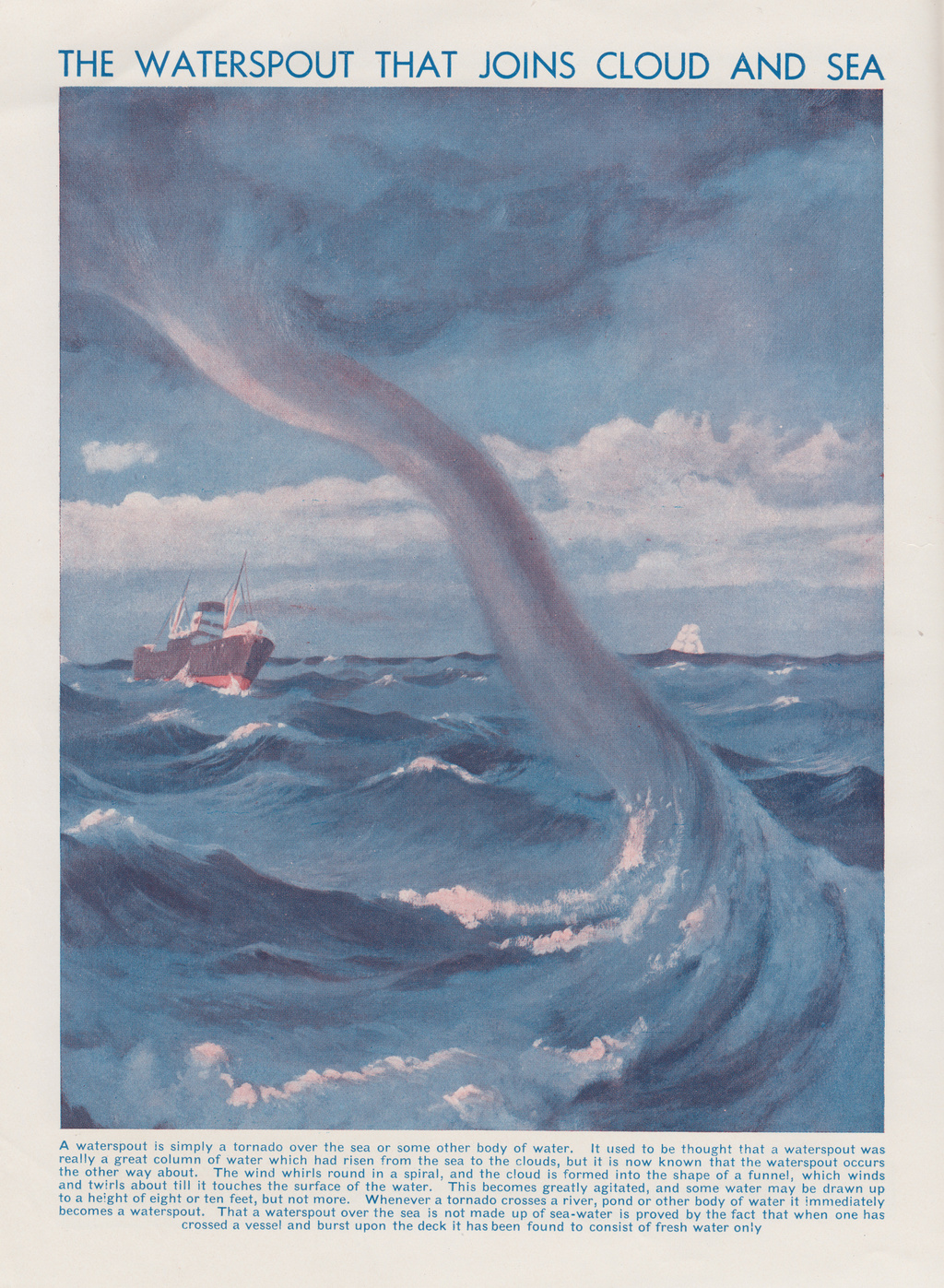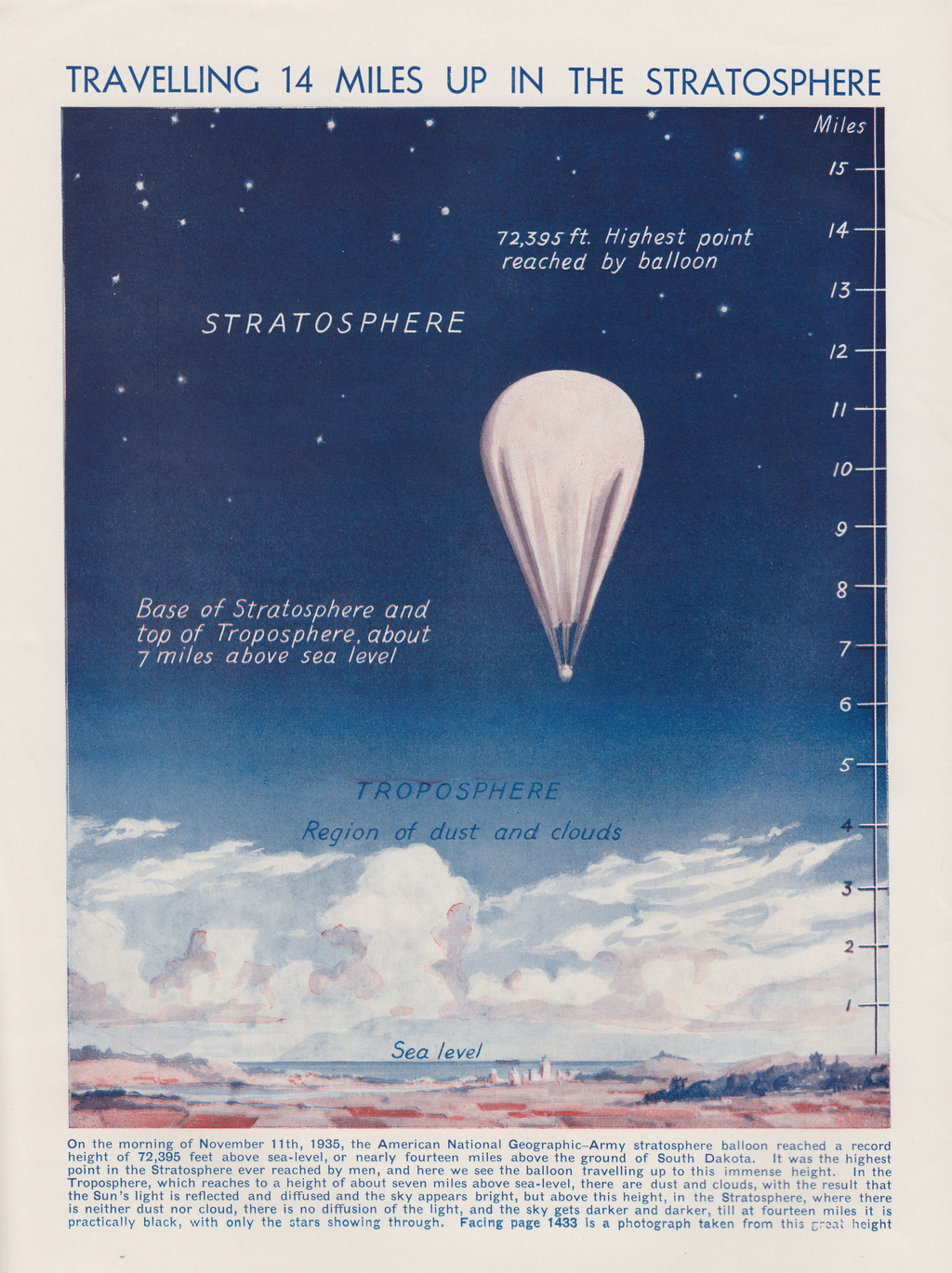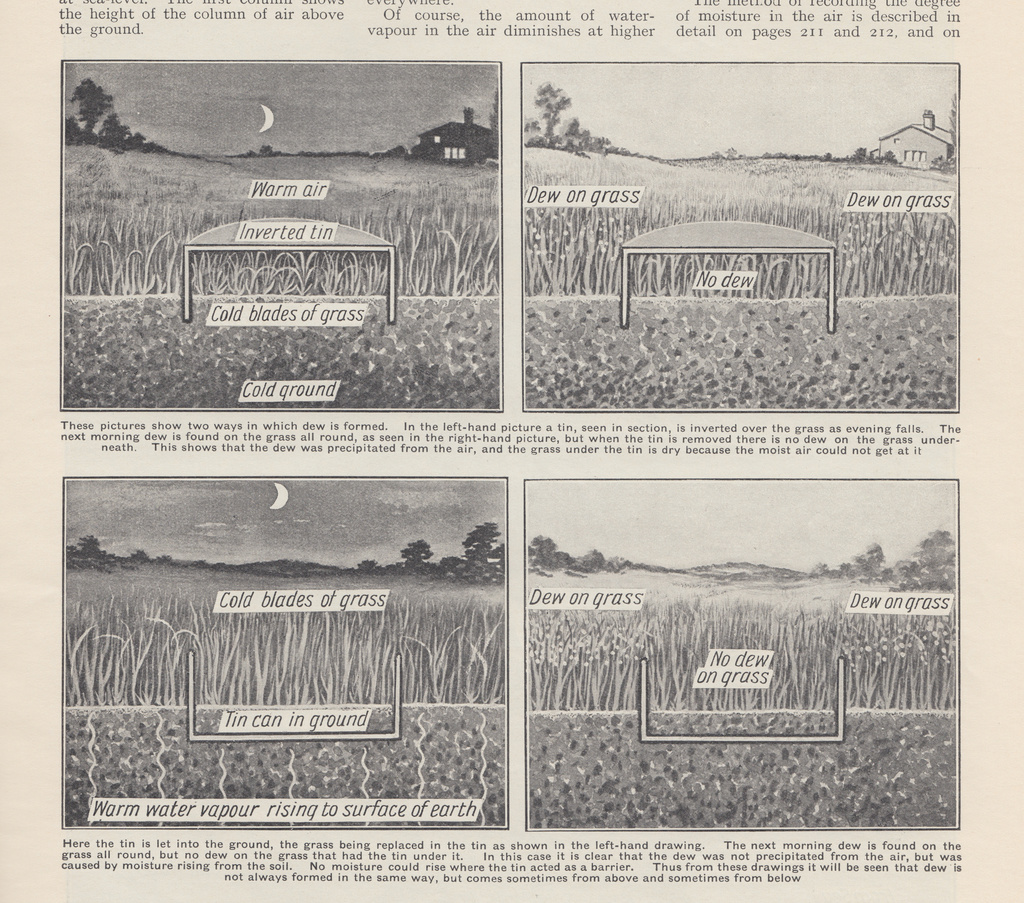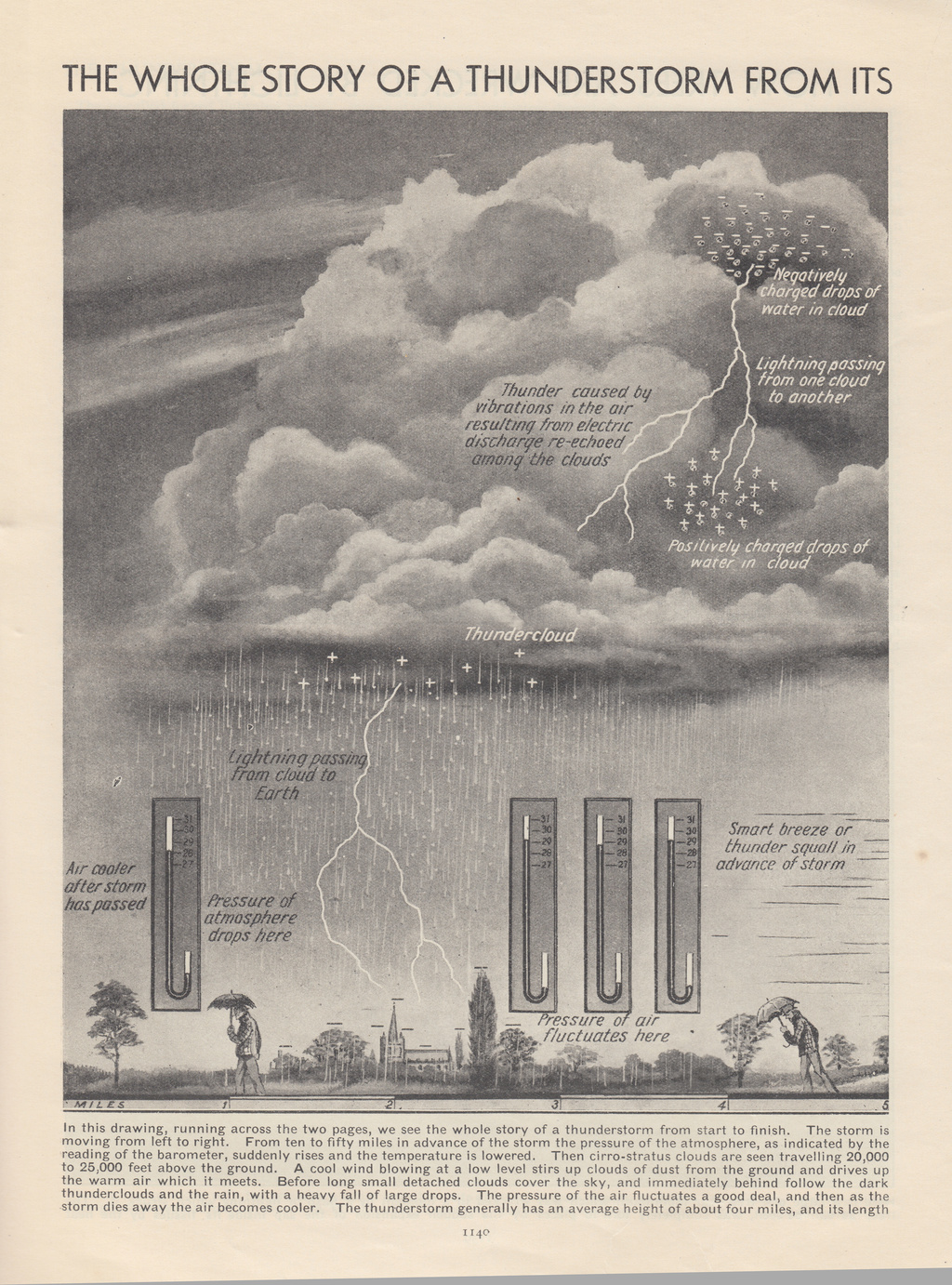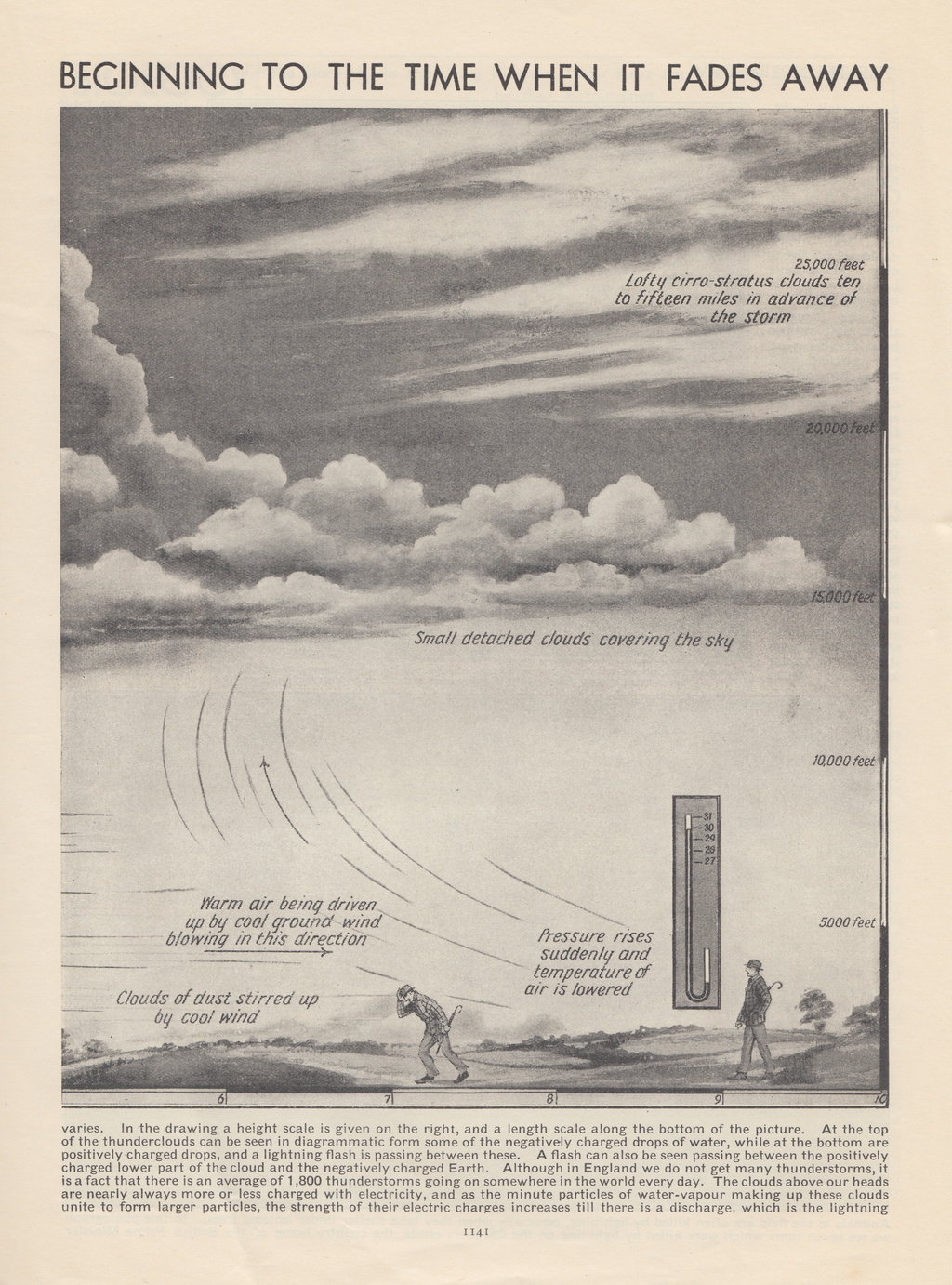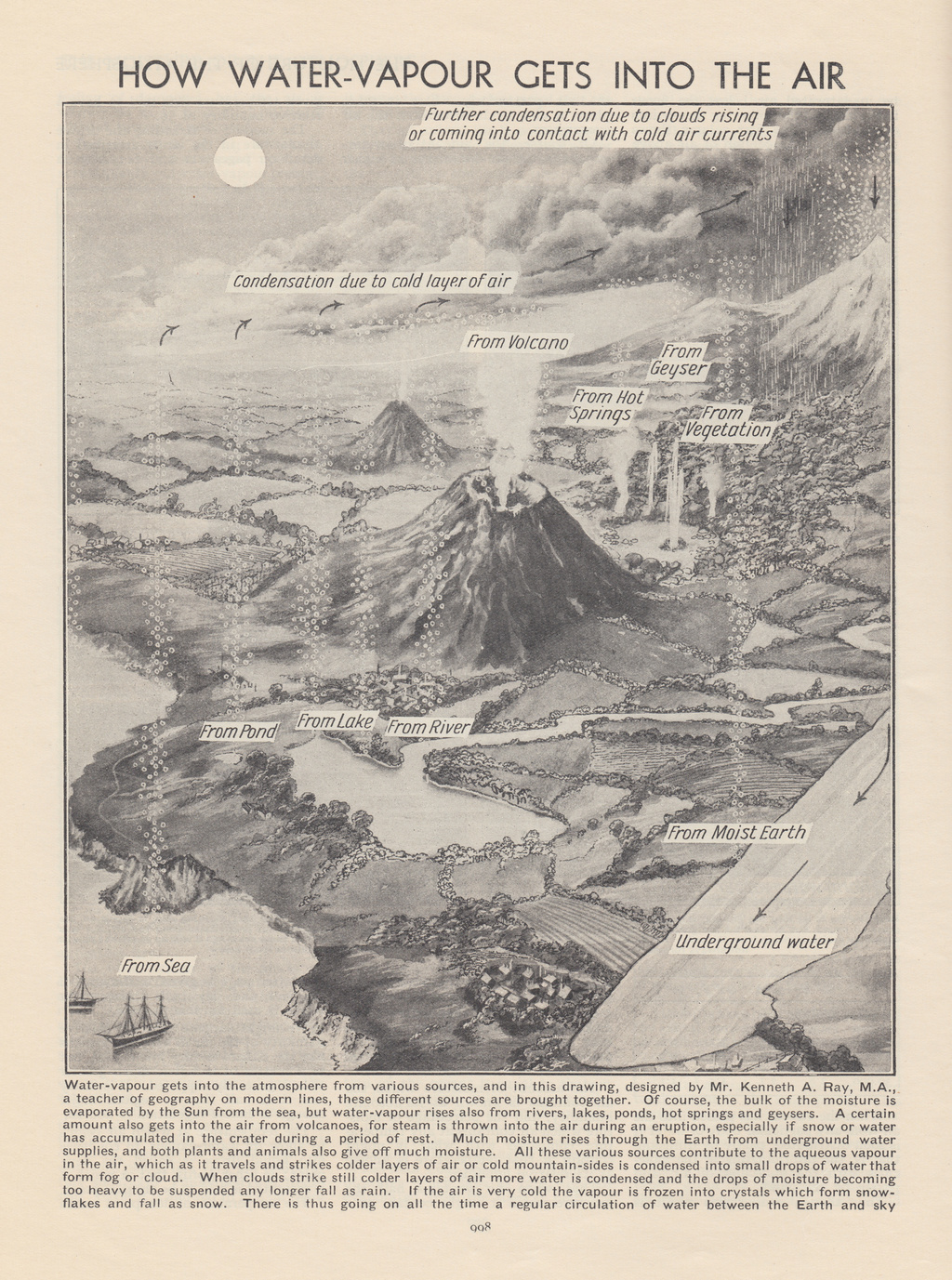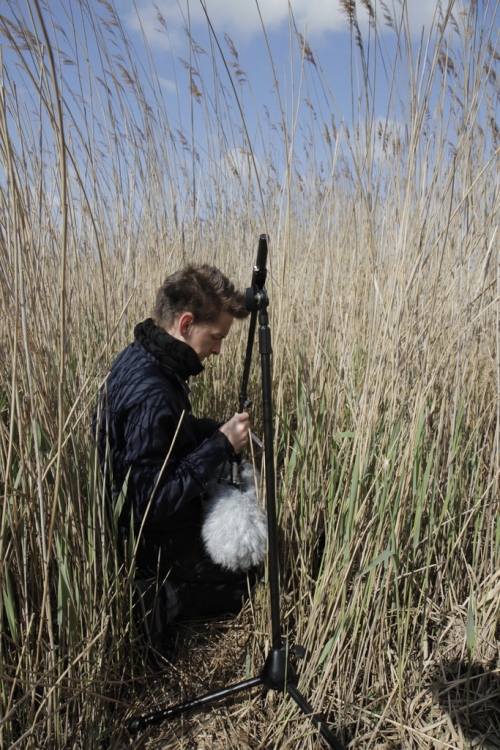Posts Tagged ‘History’
Portland Museum
Sheltering from the torrential rain on our latest residency period for Variable 4 Portland Bill, we paid a visit to the Portland Museum. It’s a fascinating place, detailing the area’s maritime and quarrying industries, packed with relics, myths and anecdotes.
The currents and tides around Portland are notoriously turbulent, most notably the “Portland Race” beyond the southern tip of the peninsula, in which two opposing tidal flows collide and create treacherous and unpredicable conditions for boats. It is for this reason that Portland has no fewer than three lighthouses. Despite this, countless wrecks have taken place around its shores, mapped and described by the museum’s knowledgeable guides.
We also couldn’t help but admire a preserved tropical sea hedgehog, one of only four recorded off the South Coast of England.
1930s Meteorological Illustrations from Popular Science Educator
The Popular Science Editor was a long-running American periodical intended to educate children of the wonders of science. Edited by Charles Ray, who himself had no scientific training, it covers a spectrum of topics from mechanics and electricity through to geology and astronomy. Articles are frequently accompanied by marvellous illustrated diagrams, though no illustrator is typically credited.
Meteorology features heavily. Below are images from editions published between 1935 and 1936.
Snape Maltings
On the estuary banks of the rivers Alde and Ore, the Snape Maltings arts complex — the soon-to-be home for Variable 4 — has a rich heritage. It is made up of a collection of former Victorian malthouses, which were subsequently discovered by composer Benjamin Britten as a suitable site for a creative hub for the south-east. Britten and Peter Pears led the 1960s redevelopment of the site for their fast-growing annual Aldeburgh Festival, featuring a huge auditorium and several rehearsal spaces.
The auditorium was tragically destroyed by a fire on the opening night of the festival, but was rapidly rebuilt and restored to operation the following year. Now owned by the Aldeburgh Music organisation, it is today used year-round for a large number of concerts, residencies and teaching, alongside countless other attractions: cafes, shops, galleries and tearooms, with food that Variable 4 can highly vouch for.
Development trip, 3 May 2011
We’ve been in Suffolk over the past couple of days on a research and development trip for Faster Than Sound: Soundfields, making measurements and planning the installation logistics. Though it’s an idyllic landscape, we inadvertently picked a suitably blustery moment to visit, with winds of 25mph thwarting some of our less-shielded microphones.




